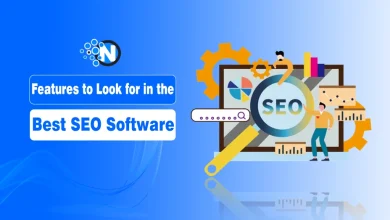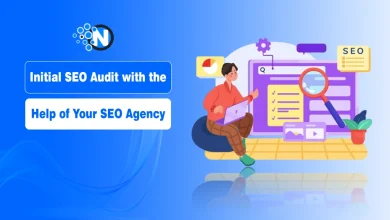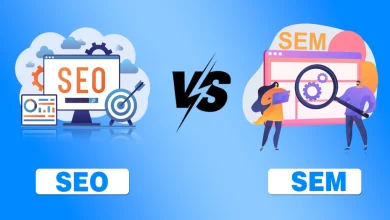Turning Traffic into Revenue – What Top SEO Minds Are Doing Differently

Getting people to visit your website is only step one. The real challenge is getting those visitors to do something that helps your business, like buy a product, fill out a form, or sign up for your service. That’s what separates average marketers from the top performers.
The best in the game understand that success doesn’t come from high traffic alone. It comes from using strategies that guide users toward action.
In this article, I am going to discuss some important points that can help you convert traffic into revenue. Let’s start.
How To Turn Traffic Into Revenue The Right Way?
There are multiple ways through which you can turn traffic into revenue. I’ve discussed the top ones below:
1 – Focusing On Intent Over Keywords
It’s not enough to rank for a popular keyword. What matters is whether the visitor is ready to act. Top marketers look at what the person is really trying to do, are they just learning, comparing, or ready to buy? This is called search intent.
By matching your content to the user’s goal, you give them what they need at the right time. That leads to better engagement and higher chances of conversion. Smart marketers focus on solving real problems, not just ranking high.
2 – Following In The Footsteps Of Experts
What works for one business may not work for another. Experts know they need to build strategies around real business outcomes, not just rankings. They study user behavior and adjust based on what drives results. The goal is always revenue, not vanity metrics.
One person doing this well is Brian Ratzker of Data First Digital. With a strong background in performance marketing, he focuses on using data to drive revenue. His approach combines technical SEO, paid media, and analytics to help businesses grow in a predictable, measurable way.
3 – Building Content Clusters That Drive Authority And Conversions
Instead of publishing random blog posts, top marketers build clusters of content around one core topic. This helps search engines see your site as a trusted source. It also keeps users on your site longer, guiding them through related content until they’re ready to take action.
These content clusters make your website feel organized and helpful. They build trust with readers, and trust is a big part of why people choose to convert. The structure also improves internal linking, which boosts visibility and supports growth.
4 – Using CRO And UX Together
Great content means nothing if the user leaves too quickly. Experts combine conversion rate optimization (CRO) and user experience (UX) to create websites that are easy to use and hard to leave. They test things like button colors, page layout, and load speed to boost results.
Even small improvements can lead to more leads or sales. Faster websites, clearer calls-to-action, and cleaner design all help users move through the buying journey. CRO and UX work best when used together—not as afterthoughts.
5 – Using First-Party Data To Guide Strategy
As privacy rules get stricter, collecting your own data is more important than ever. Top marketers use first-party data—like customer behavior, email engagement, and site activity to understand what people want and when they want it.
This kind of data helps shape smarter strategies. Instead of guessing, businesses use facts to plan content, offers, and follow-ups. First-party data gives you better control, leading to more targeted campaigns and stronger results.
6 – Creating Conversion-Optimized Content
Top-performing marketers don’t stop at getting content to rank. They make sure every piece is designed to convert. That means adding things like clear calls to action, helpful visuals, and real customer reviews. These elements build trust and guide the user to take the next step.
They also focus on formatting. Breaking up text with headings, bullet points, and images makes content easier to read. This keeps users on the page longer, which helps increase the chance they’ll click, sign up, or make a purchase. Great content is always written with the end goal in mind.

7 – Investing In Video And Interactive Assets
Modern users want more than just words on a page. That’s why the best marketers are adding videos, calculators, quizzes, and tools to their websites. These elements make the experience more engaging and often lead to higher conversions.
For example, a short video explaining your service can do more than a long paragraph. Interactive tools also let users see results for themselves—like cost savings or timelines. These types of content help build trust and make the site more memorable, encouraging users to act.
8 – Prioritizing E-E-A-T to Build Trust And Drive Sales
People buy from brands they trust. That’s why the smartest professionals focus on E-E-A-T, Experience, Expertise, Authoritativeness, and Trust. They show who’s behind the content, include expert opinions, and add social proof like ratings and testimonials.
Having real names, photos, and contact details on your site builds credibility. So does linking to respected sources and showing up-to-date information. All of these small things help users feel confident in choosing your product or service. Trust directly impacts revenue, especially online.
9 – Merging Organic And Paid Search Insights
Organic traffic and paid traffic work better together than apart. Experts know how to combine data from both channels to find better-performing keywords and content ideas. Paid search gives quick feedback, while organic search shows long-term value.
Marketers can fine-tune their organic pages by reviewing what works in paid ads, like click-through rates and conversion rates. This saves time and boosts effectiveness. The same insights help improve targeting, messaging, and landing page design. When both sides are aligned, results improve across the board.
10 – Turning SEO Into A Team Sport
Gone are the days when search optimization was one person’s job. Today, it’s a team effort. Leading companies bring content writers, designers, developers, and marketing managers together to build better-performing sites and campaigns.
Everyone has a role. Writers create clear content, designers build appealing pages, and developers keep everything running fast and smooth. Regular communication keeps projects aligned with business goals. This team-based approach creates a stronger, more focused strategy that leads to better results.
Conclusion
Bringing traffic to your website is just the beginning. What matters most is what you do with that traffic once it arrives. The best marketers are using smart, simple strategies to guide users toward action—and ultimately, toward becoming customers.
You don’t need a massive budget or team to get started. You just need to focus on the right things—like intent, trust, design, and data. Try adopting a few of these proven ideas and watch how they change your results. Growth starts with action.




